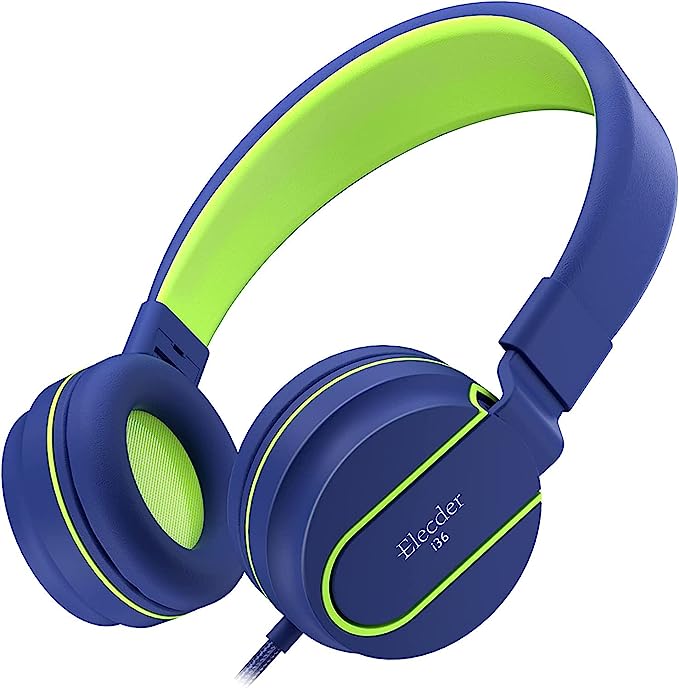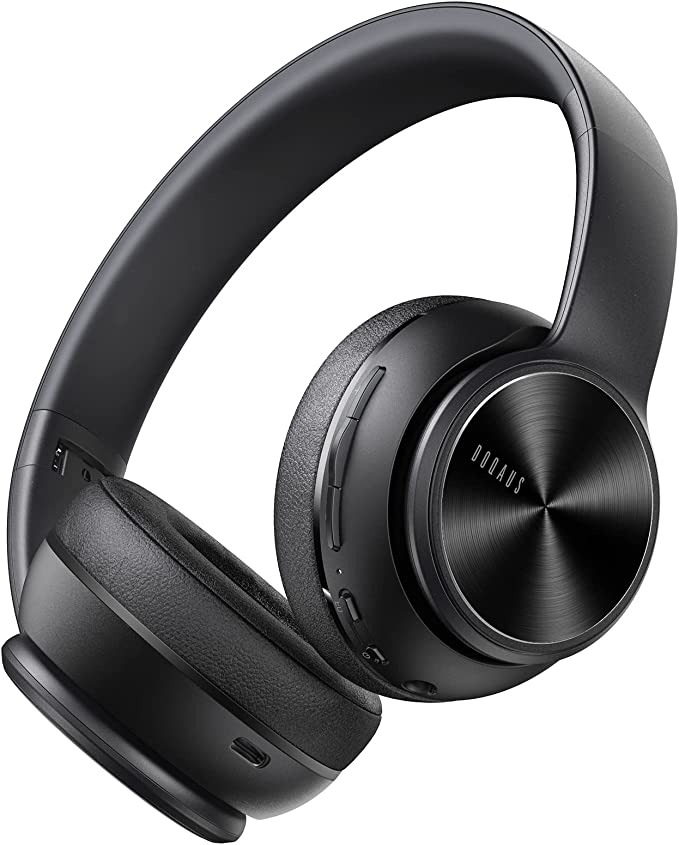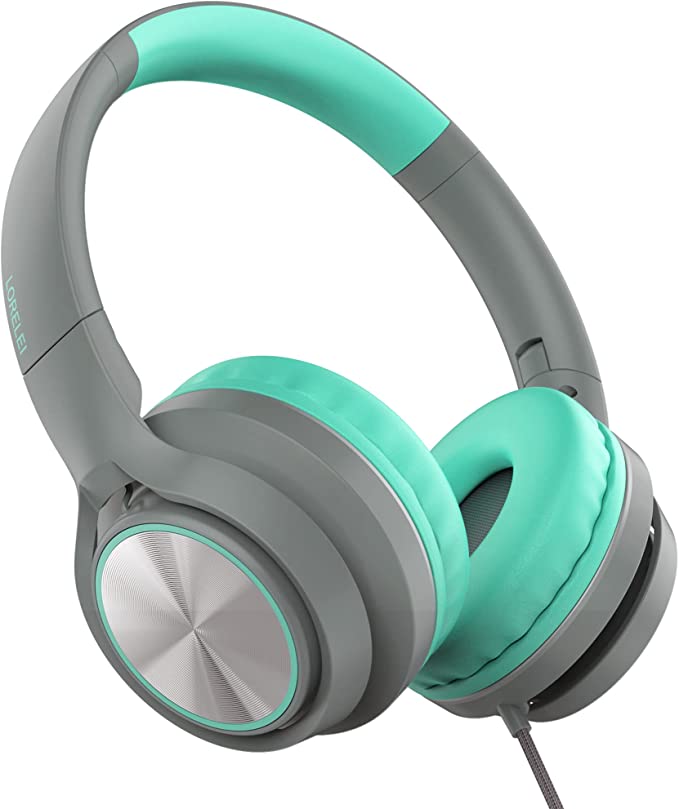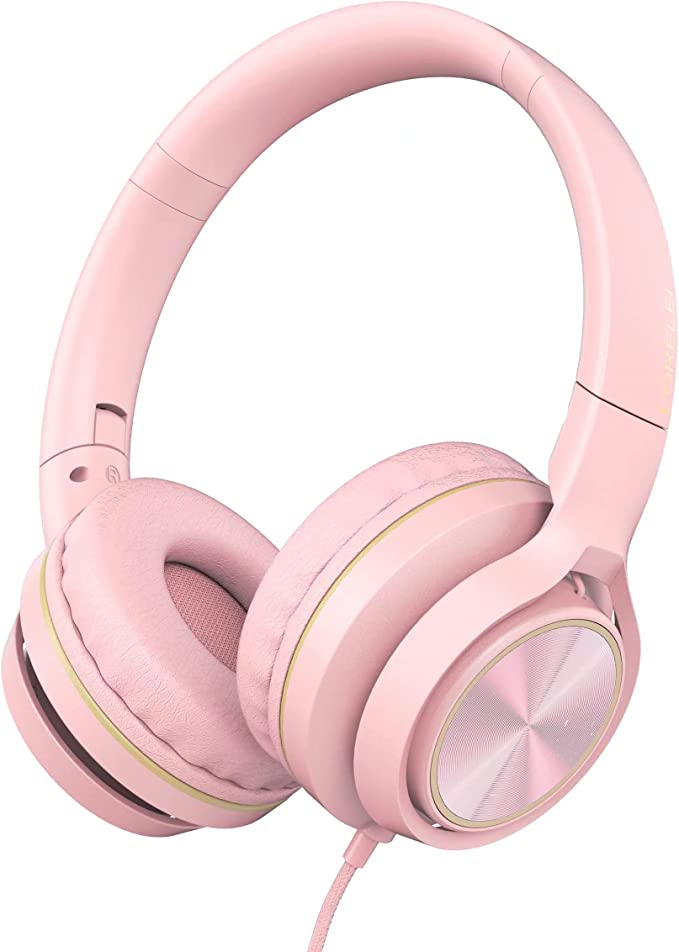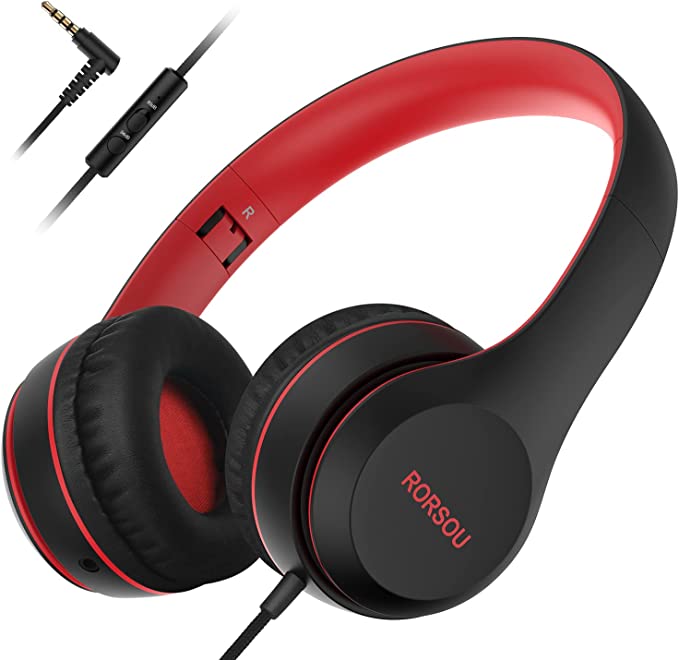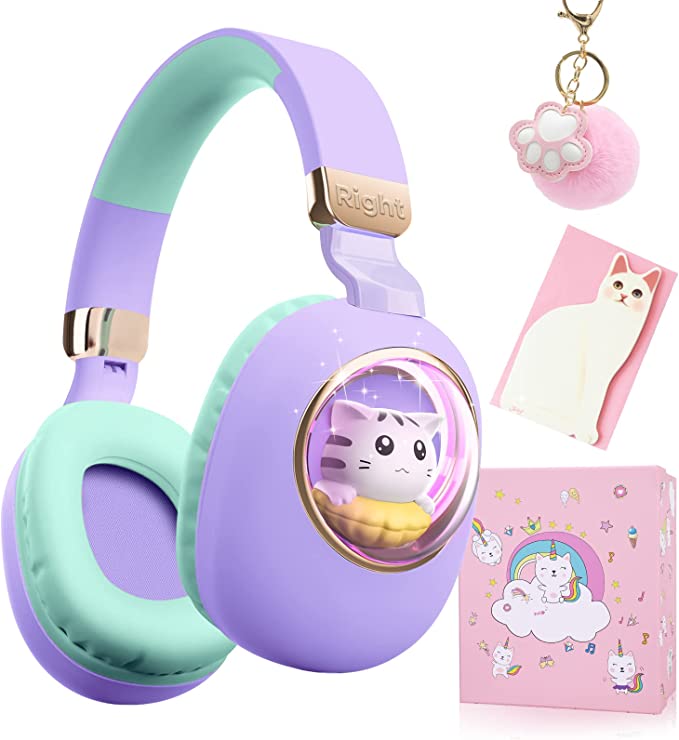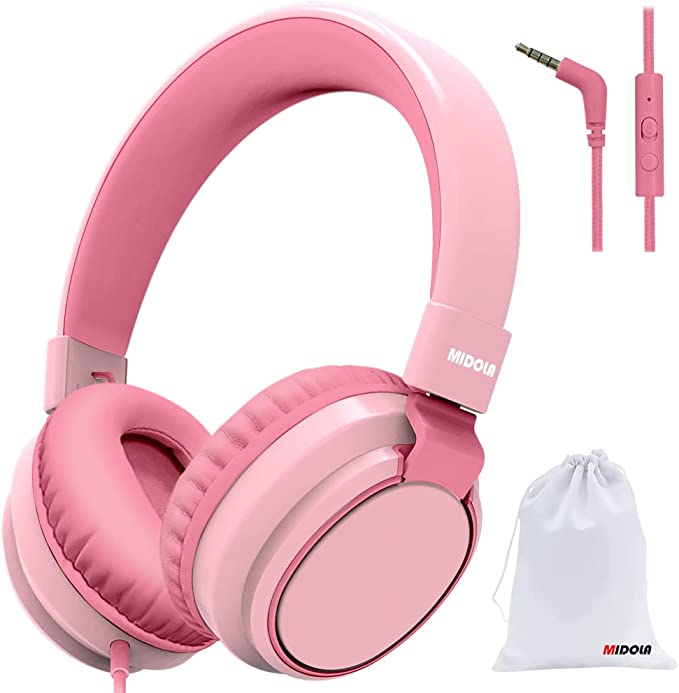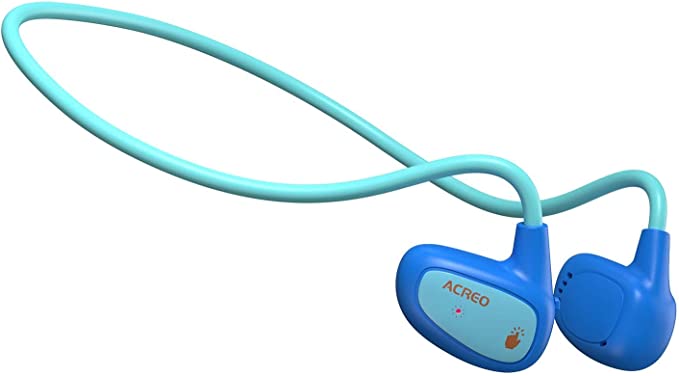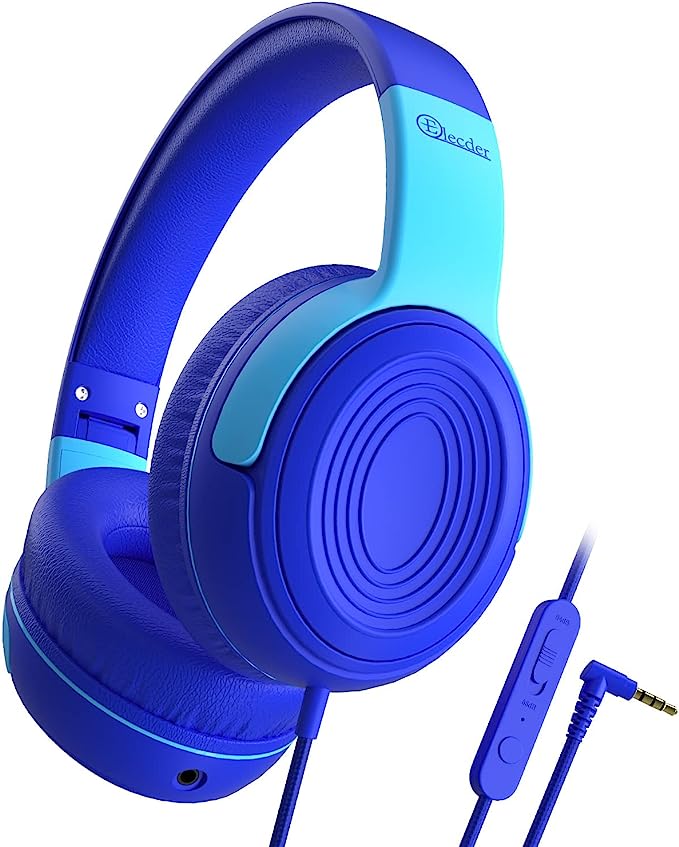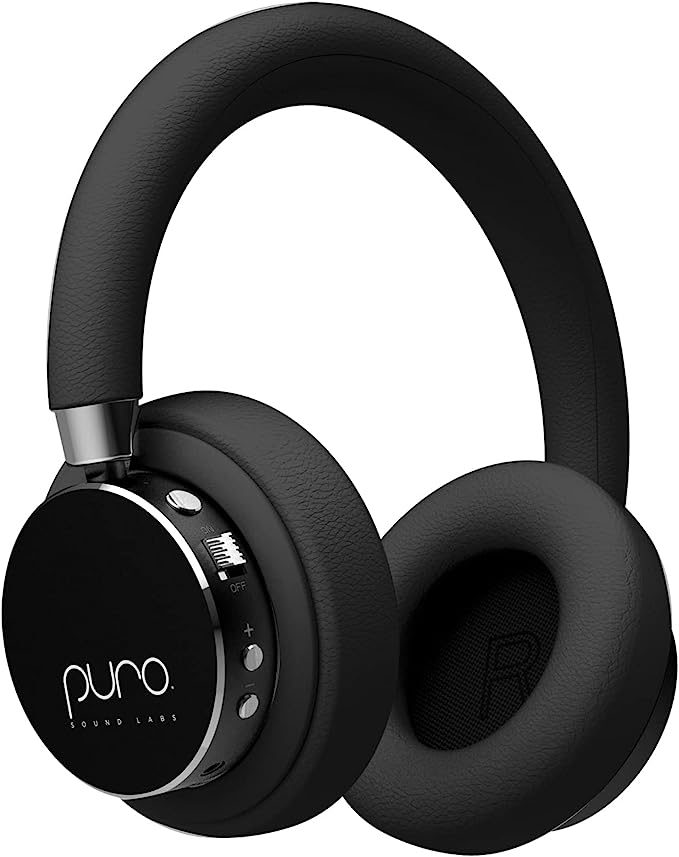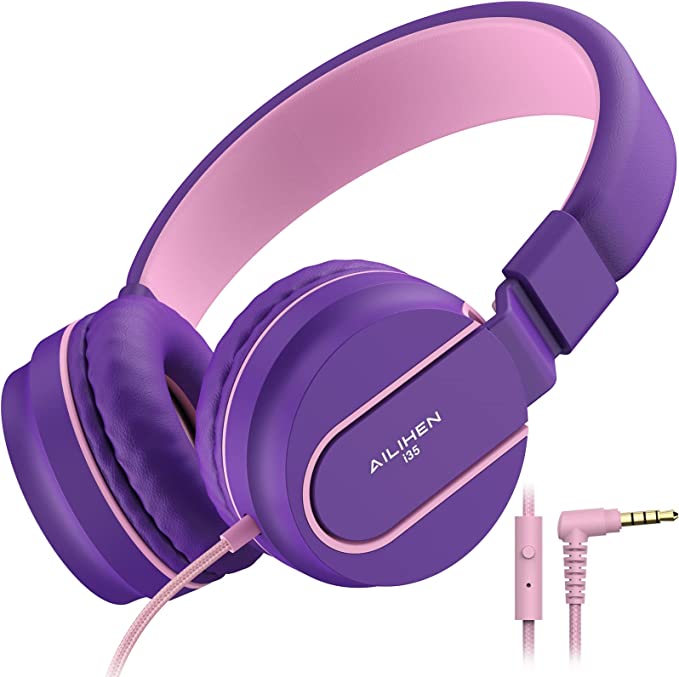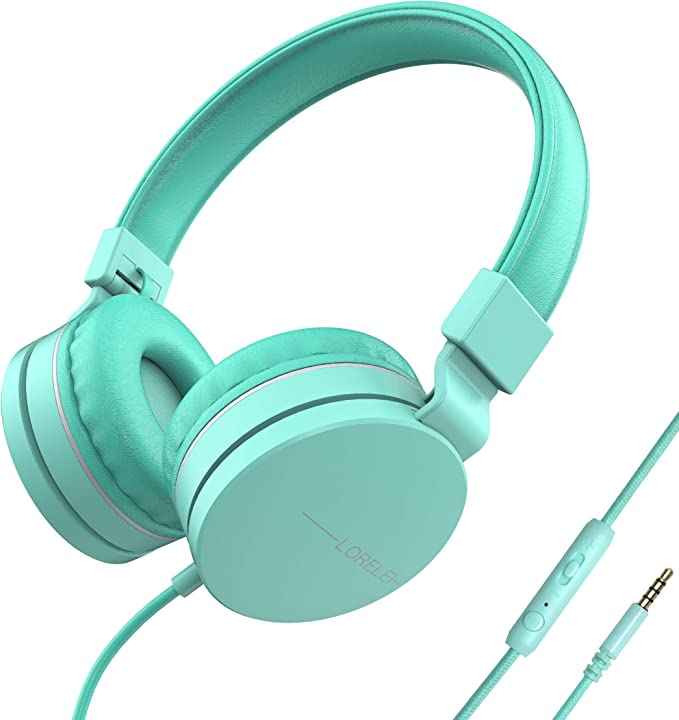DOQAUS CN1 Kids Headphones: The Science of Safer Sound and Shared Moments for Young Ears
Update on May 15, 2025, 11:41 a.m.
In the vibrant, bustling world of a child, sound is a kaleidoscope of experiences. It’s the gentle whisper of a bedtime story, the enthusiastic chime of a learning app, the rousing chorus of a favorite song, or the focused instructions from an online teacher. Increasingly, these sounds are delivered through a personal gateway: headphones. As parents and caregivers, we marvel at how these tools unlock worlds of learning and entertainment for our young ones. Yet, a quiet question often accompanies this marvel: how do we ensure this intimate auditory experience is nurturing and, above all, safe? This isn’t merely about selecting a gadget; it’s about thoughtfully curating a vital part of our children’s sensory environment.

Whispers to Roars: A Journey into the Ear
To appreciate the importance of safe listening, let’s embark on a brief journey into the ear itself – an organ of astonishing complexity and delicacy. When sound waves, which are essentially vibrations in the air, enter the ear canal, they cause the eardrum to vibrate. These vibrations are then amplified by tiny bones in the middle ear and transmitted to the cochlea, a spiral-shaped structure in the inner ear that resembles a miniature snail shell.
Inside the cochlea reside thousands of microscopic hair cells. Imagine them as incredibly fine reeds in a delicate wind instrument, or perhaps like a dense field of wheat, swaying in response to the subtlest breeze. These hair cells are the true heroes of hearing; they convert the mechanical vibrations of sound into electrical signals that the auditory nerve carries to the brain, where they are interpreted as the sounds we recognize.
A child’s auditory system is a marvel, but it’s also a system still under construction, with developing pathways and heightened sensitivity. These delicate inner ear hair cells, once damaged, do not regenerate in humans. Prolonged exposure to loud sounds can overwork and damage these cells, leading to Noise-Induced Hearing Loss (NIHL). It’s like constantly shouting at those delicate reeds until they bend, break, or become less responsive. This damage is often gradual and painless, an unseen risk that can accumulate over time, potentially impacting a child’s ability to learn, communicate, and engage with the world.
So, how loud is too loud? Sound intensity is measured in decibels (dB). A soft whisper might be around 30dB, a normal conversation around 60dB, and city traffic can reach 80-85dB. Many audiological organizations, including the World Health Organization (WHO), suggest that prolonged exposure to sounds above 85dB carries a significant risk of hearing damage. It’s crucial to understand that the decibel scale is logarithmic, meaning that a relatively small increase in dB represents a large jump in sound intensity and potential for harm. For instance, 80dB is twice as loud as 70dB, and 90dB is four times as loud as 70dB in terms of sound pressure!

Decoding “Kid-Friendly”: A Deeper Look at Thoughtful Headphone Design
When we see headphones labeled “for kids,” it should signify more than just bright colors or a smaller size. True “kid-friendliness” is rooted in scientific understanding and thoughtful engineering. Let’s explore some key features, using the design considerations found in products like the DOQAUS CN1 Wired Headphones for Kids as a framework for our discussion.
The Guardian at the Gates: The Science Behind Volume Limiting
One of the most critical safety features for children’s headphones is an integrated volume limiter. The challenge is clear: how can sound be audible enough for engagement, especially in varying noise environments, yet consistently capped below potentially harmful levels?
Headphones like the DOQAUS CN1 are described as offering multiple volume limit tiers, such as 74dB, 85dB, and 94dB. This tiered approach acknowledges that a single, very low limit might render headphones unusable in anything but the quietest settings.
- A 74dB level, for example, is well-suited for quiet, focused activities. Think of a child listening to a calming story in their bedroom or concentrating on an audio-based lesson in a silent room. This level provides clarity without unnecessary sound energy.
- An 85dB limit is a widely recognized benchmark. Consistent exposure at this level for extended periods is what many experts consider the threshold for potential risk. Thus, having headphones that can be reliably set not to exceed this for general daily use—be it for interactive games, music, or educational videos—is a significant safeguard. It allows for clear audibility while respecting the ear’s limits.
- A higher setting, such as 94dB, as described for the CN1, is intended for use in noisy environments – perhaps a school bus or during air travel. In such situations, ambient noise can easily mask the headphone audio, tempting a child (or adult!) to crank the volume on an unrestricted device to dangerous levels. A controlled 94dB output aims to provide audibility above the background noise without resorting to extreme volumes. However, it’s vital to understand that listening at 94dB should be for significantly shorter durations than at 85dB. This higher tier is a situational tool, not a default listening level.
The science here is about managing sound energy exposure over time. By providing these controlled output caps, such designs help prevent accidental overexposure, acting as a proactive guardian for young, sensitive ears.

The Conductor’s Baton: Understanding Audio Clarity
Beyond safety, the quality of the sound itself is paramount, especially when headphones are used for learning. Muffled dialogue or distorted music can turn an engaging experience into a frustrating one. The heart of any headphone, responsible for producing sound, is the driver unit. The DOQAUS CN1, for instance, specifies $\Phi40mm$ driver units.
Imagine the driver as the “voice box” or the miniature orchestra within the earcup. It typically consists of a diaphragm (a thin membrane), a voice coil (a coil of wire attached to the diaphragm), and a magnet. When the audio device sends an electrical signal representing the sound, it flows through the voice coil, creating a rapidly changing magnetic field. This field interacts with the permanent magnet, causing the voice coil and the attached diaphragm to vibrate rapidly. These vibrations push and pull the air, creating the sound waves that travel to our ears.
The size of the driver, such as 40mm, can influence its ability to reproduce a wide range of frequencies, particularly lower bass notes, contributing to a fuller, richer sound. However, sheer size isn’t everything; the quality of the components and the acoustic design of the earcup are equally critical.
The product information for the CN1 mentions “Pure Sound Quality” and adoption of a “child’s special pronunciation frequency band.” While “Pure Sound Quality” is a subjective term, the reference to a “pronunciation frequency band” hints at acoustic tuning. Human speech occupies a specific range of frequencies, and crucial information for distinguishing different sounds (phonemes) lies within this band. Headphones tuned to subtly emphasize or clarify these speech-critical frequencies can significantly enhance the intelligibility of spoken content in educational programs, audiobooks, or online lessons. This means a child is less likely to mishear instructions or struggle to follow a narrative, making learning more effective and enjoyable. This is achieved within the typical audible frequency response for humans, often cited as 20Hz to 20kHz.

The Gentle Embrace: Ergonomics, Materials, and the Art of Comfort
If a child is to wear headphones for any length of time, comfort is not a luxury; it’s a necessity. Discomfort can lead to distraction, fidgeting, and a reluctance to use an otherwise beneficial tool. Several design aspects contribute to comfort.
Firstly, weight. The DOQAUS CN1 is listed at 0.5lb (approximately 230g). For a child, whose neck and shoulder muscles are still developing, a lightweight design is crucial to prevent strain and fatigue. Imagine a child wearing a heavy backpack for too long; the same principle applies to ill-suited headphones. A lighter load means a more comfortable experience, especially during extended online classes or long journeys.
Secondly, materials and earcup design. The description “kid-specific materials” and “soft ear cups have good breathability” points towards important considerations. While the exact composition of “kid-specific materials” isn’t detailed in the provided source, the implication is that materials should ideally be durable, non-toxic, and non-irritating to sensitive skin. Soft, cushioned earcups, particularly for an on-ear design like the CN1, help distribute pressure evenly around the ear, preventing soreness. Good breathability in the earcup material helps to reduce heat and moisture buildup, which can otherwise lead to sweaty, uncomfortable ears.
Finally, the form factor. On-ear headphones sit directly on the outer ear. This design can offer a good balance between some passive noise isolation (reducing the intrusion of some external sounds) and maintaining a degree of awareness of the immediate surroundings, which can be important for safety. A foldable design, also mentioned for the CN1, adds a practical element, making the headphones easier to store and transport without damage.
Echoes of Connection: The Simple Brilliance of Sharing Audio
In an increasingly digital world, fostering social connection and collaborative experiences is more important than ever. A feature like the Shareport on the DOQAUS CN1—an additional 3.5mm jack on the cable that allows another pair of headphones to plug in and share the same audio source—is a deceptively simple yet powerful tool for this.
Think of two siblings huddled over a tablet on a long car ride, each immersed in their own sound world, or perhaps squabbling over who gets to listen. The Shareport elegantly resolves this. From a technical perspective, it’s a straightforward audio signal split, likely a parallel circuit that divides the audio output. But its real value lies in the social and developmental benefits. It enables children to watch a movie together, listen to the same audiobook, or even collaborate on an educational game, each with their own comfortable listening experience. This can encourage turn-taking, discussion, and the simple joy of a shared moment, transforming solitary screen time into a more interactive and bonding activity. It also eliminates the need for separate, often flimsy and easily lost, audio splitter dongles.
The Unsung Hero: Reliable Connection and Clear Communication
In the realm of educational technology and staying connected, a few fundamental features ensure a seamless experience. The in-line microphone transforms headphones from a passive listening device into an active communication tool. For children participating in online classes, this means they can clearly ask questions and engage in discussions. For connecting with family and friends via video calls, it ensures their voice is heard.
The enduring 3.5mm audio jack is another unsung hero. Despite the rise of wireless technologies, the wired 3.5mm connection offers universality and reliability. Its history stretches back over a century, initially used in telephone switchboards, a testament to its robust and effective design. For children’s headphones, a wired connection means no concerns about battery life running out mid-lesson, no complicated pairing procedures, and a generally more durable and interference-free audio signal. The stated compatibility of the CN1 with a wide array of devices—iPad, Chromebook, Switch, Smartphone, Computer, Kindle, MP3/4, Fire Tablet, Study Tablet, Laptop, PC—underscores the versatility that this simple connector provides. The specified 1.4m cable length offers a reasonable degree of freedom of movement while connected.
The Symphony of Responsibility – Nurturing Lifelong Healthy Listening Habits
While thoughtfully designed headphones provide an excellent foundation for safe and enjoyable listening, they are ultimately tools. The most profound impact on a child’s auditory health comes from fostering a culture of responsible use, guided by informed and engaged parents and caregivers.
This involves more than just handing over a pair of “safe” headphones. It’s about education and empowerment. Teach children why it’s important to listen at moderate volumes. Simple analogies can help: “Just like we don’t stare directly at the sun to protect our eyes, we listen at comfortable sounds to protect our ears.” Encourage regular listening breaks. The “60/60 rule” is a helpful, though general, guideline often suggested: listen at no more than 60% of the maximum volume for no more than 60 minutes at a time before taking a break. This allows those delicate hair cells in the inner ear a chance to rest and recover.
Be observant. If a child complains of ringing in their ears (tinnitus), seems to have difficulty hearing, or frequently asks for things to be repeated, these could be signs of listening fatigue or potential hearing strain that warrant attention.
Furthermore, consider the child’s entire “soundscape.” Is the home environment generally quiet and calm, or is it filled with constant loud background noise from television or other sources? Creating periods of quietude allows ears to rest and also fosters concentration and a greater appreciation for the nuances of sound.
Choosing headphones designed with a child’s auditory health and developmental needs in mind is a significant first step. Features like volume limiting, clear audio reproduction for learning, comfortable ergonomics, and even opportunities for shared experiences all contribute to a more positive and protective interaction with the world of sound. By combining these technological safeguards with mindful guidance and an awareness of healthy listening practices, we can empower our children to explore, learn, and connect through sound, not just for today, but for a lifetime of rich auditory experiences. It’s about ensuring that the soundtrack of their childhood is one of clarity, joy, and enduring well-being.

